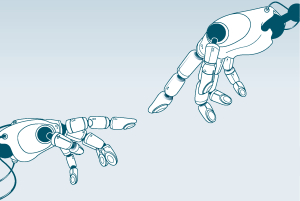The previous post dealt with changes in society and arts. Hence, the impact of these artistic — and the consequential scientific — achievements would not have had such a rapid influence across different domains of human endeavor without the development of new representation technologies — the media of today. And the capabilities of the artists would not have spread that far geographically that quickly. The increased demand in arts, engineering and building projects required non-verbal and traceable communication record of a greater durability than wooden tablets with clay or wax. Parchment was available, but was far too expensive. During the Renaissance paper manufacturing, which was probably invented in China around 100 AD, was mastered and paper mills set up across Europe. Advances in pencil making — first with “leads” and then with graphite [Lindgren 1997] — complemented the paper development and enabled affordable written communication. In German the word for pencil still is “Bleistift”, with “Blei” being the word for lead (plumbum.) Even before literacy become more widespread sketches and drawings were used to communicate.
The communications techniques were soon complemented by the printing press with movable fonts. This was the true beginning the development of broadcasting. Non-verbal communication up to then had been in the hand of a very few, who could afford the appropriate number of scribes. The first Renaissance started the democratization of communication and broadcasting, which is now once more being revolutionized by the internet.
Not only the material world, but in particular the spiritual dimension was given new visual expression. One example is Michelangelo’s freso in the Sistine Chapel. Paintings began to take on a size that allowed messages and even whole stories to be conveyed. In public spaces this became paramount to broadcasting. Not all the messages were meant to be decipherable easily, though. And the fascination with these messages continues.

Michelangelo’s “The Creation of Adam” part of the Fresco in the Sistine Chapel ceiling, Rom, Vatican
[Wikipedia]

Space Robot Photo Recreates Michelangelo’s Sistine Chapel Scene
[NASA]


Pingback: 10 Most Famous Paintings In The World